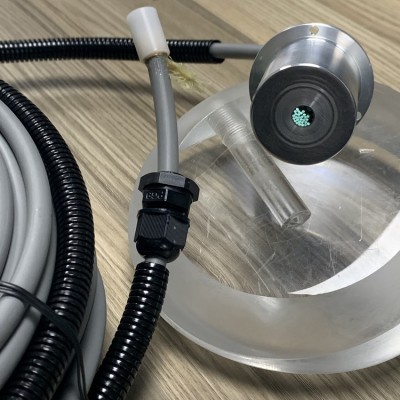



Multi-core (28-core) CK4.0 wind turbine lighting optical fiber is a fiber optic cable with 28 optical fiber cores specially designed for wind turbine lighting systems.At the same time, the multi-core design can improve the reliability and flexibility of the lighting system. Even if one or several optical fibers fail, the other optical fibers can continue to transmit optical signals to ensure a certain degree of lighting effect.
Jinzhi provides highly reliable industrial fiber optic components for isolation in the data acquisition/control and power generation markets. These products have excellent high insulation voltage performance and immunity to EMI, and can be installed and operated near power transmission pipelines that can produce destructive electrical interference. As the global demand for renewable energy grows, the design of wind turbines has become larger and larger. Jinzhi's industrial fiber optic products provide a wide range of data rates and link lengths for many applications in this power generation market.
Features:
1. Multi-core redundant design, high reliability
28-core independent transmission: Through 28 independent fiber cores, parallel transmission of multiple optical signals can be achieved, supporting multi-point layout of complex lighting systems (even if some fiber cores are damaged due to vibration, wear, etc., other fiber cores can still maintain basic lighting functions, significantly improving the redundancy and fault tolerance of the system.
Flexible branching and centralized management: The multi-core structure facilitates the branching and distribution of optical signals through fiber splitters or terminal boxes, and can evenly disperse the light of a single light source to multiple lighting points, simplifying the complexity of wiring and reducing the cost of light source equipment.
2. Adaptability to extreme environments
Mechanical durability:
Anti-bending and vibration: The minimum bending radius is only 10mm, which can adapt to the narrow space and frequent mechanical vibration inside wind power equipment, reducing the risk of optical loss or fiber core breakage caused by bending stress.
3. Electrical safety and explosion-proof characteristics
Photoelectric separation design: Optical fiber only transmits optical signals, is completely insulated and non-conductive, avoiding the risks of short circuits and electric sparks that may be caused by traditional power cables. It is especially suitable for explosion-proof areas where flammable gases exist inside wind turbines.
Scope of application:
1. Wind turbine internal lighting system
Redundancy and emergency lighting: The multi-core design can reserve some fiber cores as backup lines or emergency lighting channels. When the main light source fails, the backup lighting can be quickly activated by switching the optical path to improve the reliability of the system.
2. High-altitude platform and external facilities
Hub and blade maintenance: Installing fiber optic lighting terminals inside the hub or at the root of the blade makes it easier for staff to check key components such as bearings and pitch systems, avoiding the inconvenience and safety hazards of carrying traditional lighting equipment.
3. Intelligent and integrated system
Fiber optic sensing and lighting fusion: Some fiber cores can be reused as distributed fiber optic sensors to achieve an integrated solution of "lighting + status monitoring", reduce cable deployment costs and improve the level of equipment intelligence.
In the future, as wind power equipment develops towards larger scale and intelligence, the application of such optical fibers will be further expanded to the integrated field of "lighting + sensing + communication", promoting the digital upgrade of the wind power industry.